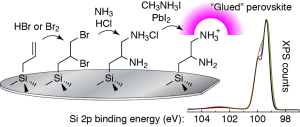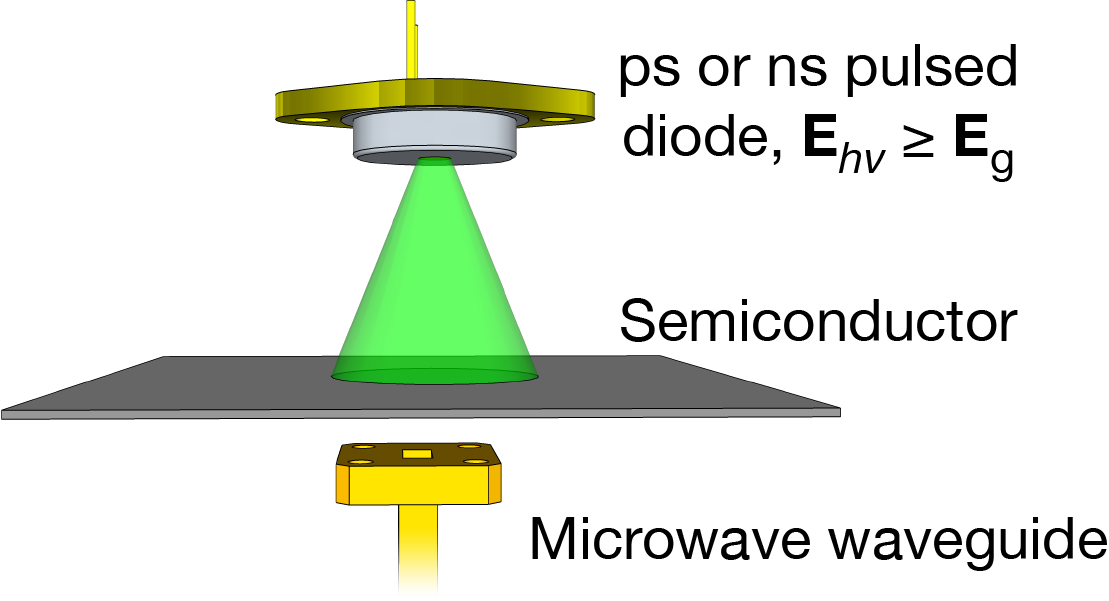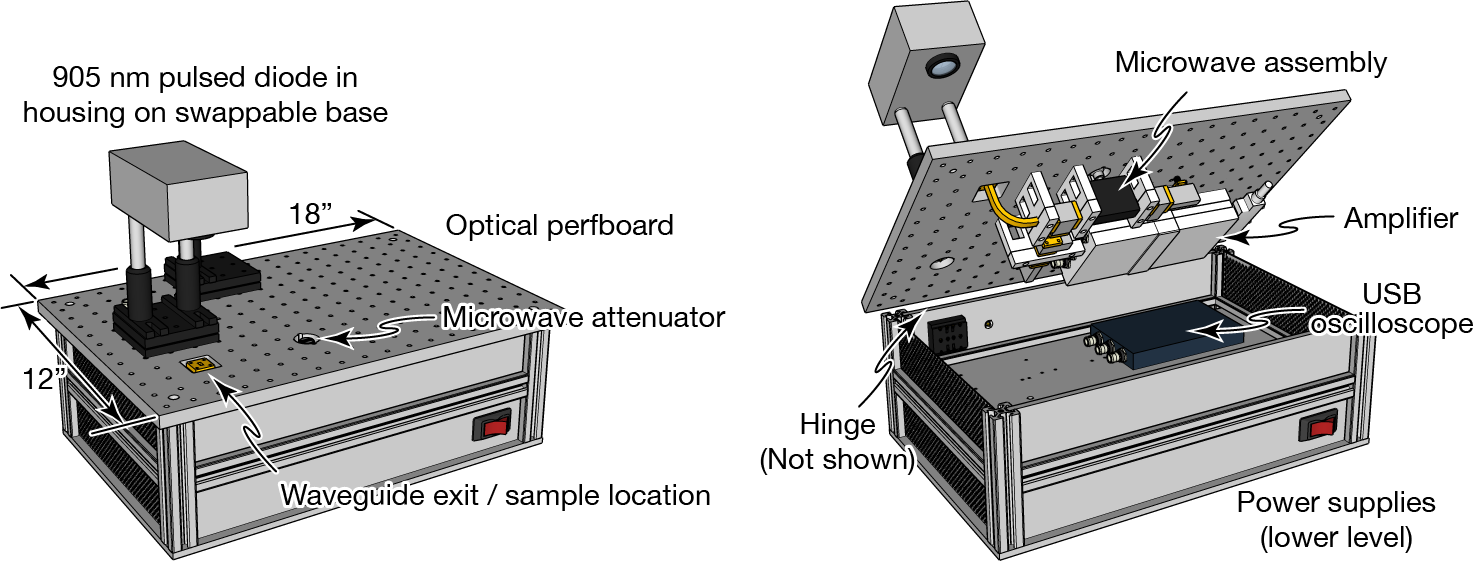Photoconductivity instruments are generally used to establish recombination lifetimes in semiconductor materials. In LED materials, one desires rapid recombination with high efficiency of photoluminescence (as opposed to thermal pathways that do not emit light) and in solar materials, one desires slow recombination to maximize the likelihood of capturing the photo generated carrier as electricity.
Contactless methods such as microwave and RF photoconductivity as particularly well suited to establish carrier lifetimes in the discovery and optimization phase of new materials. These experiments are straightforward and fast, and are particularly well suited for materials with recombination lifetimes in the nanosecond-to-millisecond ranges. RF photoconductivity have a lower bound on their time sensitivity on the order of hundreds of nanoseconds based on the Q-factor of their detecting circuit. Microwave photoconductivity methods can detect faster responses at the general cost of sensitivity. For researchers interested in recombination lifetimes on the picosecond timescale, or colleague in WPI Physics, Lyuba Titova’s group, utilizes contactless THz spectroscopy that elucidates ps-to-ns recombination lifetimes.
We use a microwave photoconductivity instrument to quantify the recombination lifetime of photo generated carriers in silicon to assess the quality of surface passivation.
We built this instrument in-house with our own control software. We use a 38 GHz (Ka band) microwave source, WR28 waveguides, and a finline diode detector. A ~10 ns pulse from a 905 nm diode provides photoexcitation, however the instrument is set up to use external triggering and a separate illumination source. The microwaves radiate through free space between the detection waveguide and the semiconductor, so the sample may be atmospherically isolated in a plastic, glass, or quartz cell as desired. The signal is amplified and digitized by a headless USB oscilloscope where it is sent to the computer. An in-house-written LabVIEW program collects data, provides averaging, and fits data to a single exponential decay that reveals recombination rates. For high quality material with negligible bulk recombination, the decay time determines the surface recombination velocity of the material.
Contact Grimm for questions about use our about quantifying lifetimes in semiconductors. You can also read a paper we published where we heavily utilized this instrument to establish the quality of our organic passivation at silicon surfaces:
 Synthesis and Characterization of Alkylamine-Functionalized Si(111) for Perovskite Adhesion with Minimal Interfacial Oxidation or Electronic Defects.
Synthesis and Characterization of Alkylamine-Functionalized Si(111) for Perovskite Adhesion with Minimal Interfacial Oxidation or Electronic Defects.
Alexander D. Carl, Roghi E. Kalan, John David Obayemi, Martiale Gaetan Zebaze Kana, Winston Oluwole Soboyejo, and Ronald L. Grimm.
ACS Appl. Mater. Interfaces, 2017, 9(39), 34377-34388. 10.1021/acsami.7b07117



 Research
Research
 Energy
Energy
 People
People